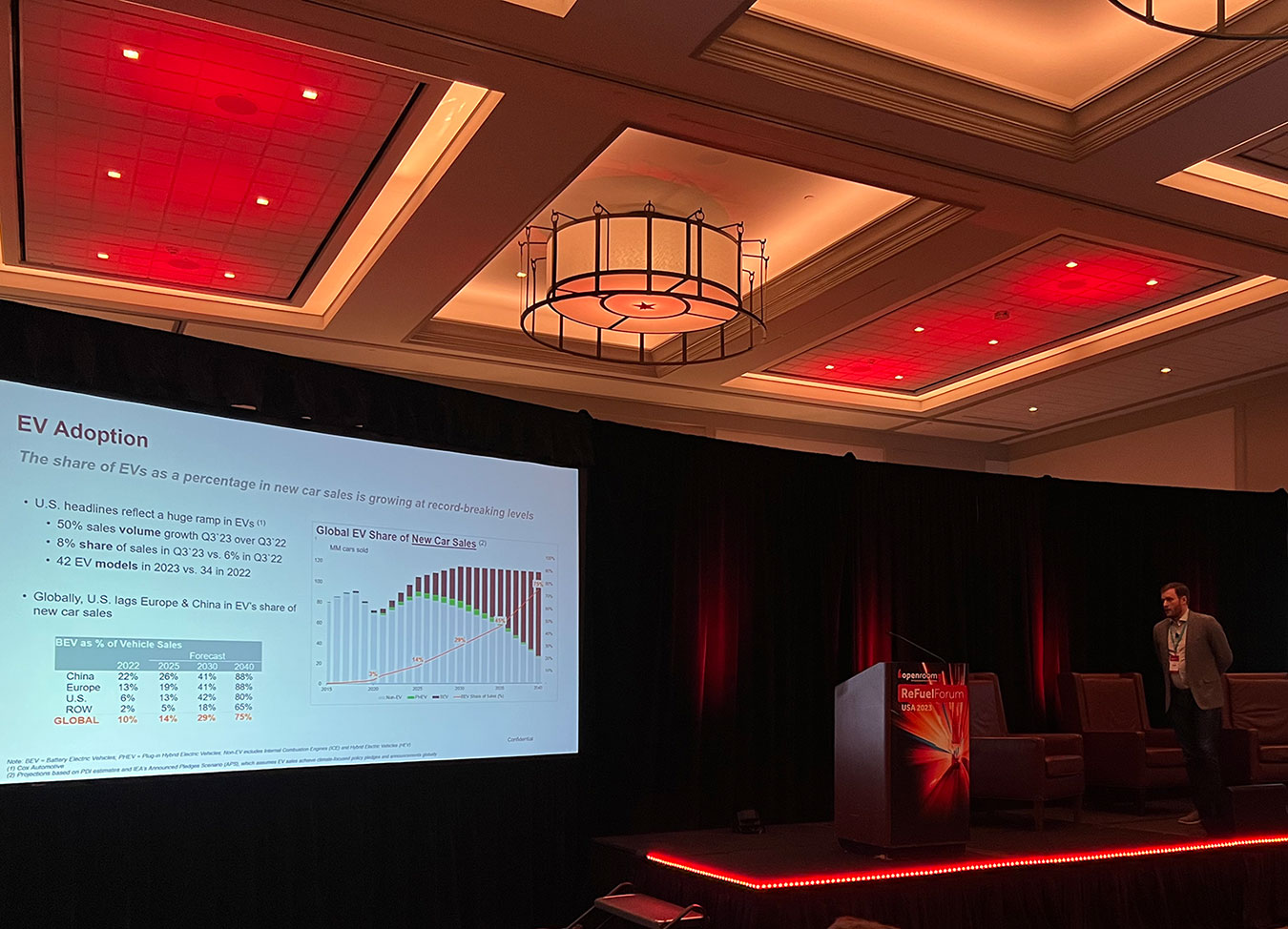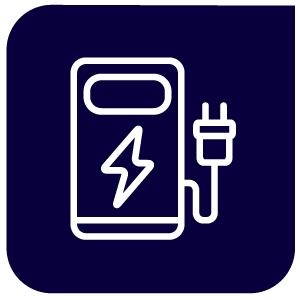
I recently attended the launch of an exciting new event for the convenience industry: ReFuelForum USA 2023 in San Antonio, Texas. This inaugural forum focused on the transformation of fuel retail in light of trends like electrification, automation, and changing consumer demands. It brought together retailers, technology providers, and other stakeholders to talk about strategy for the fueling stations of the future.
The day started with an interesting electric vehicle (EV) twist as your favorite EV newbie forgot to plug in and charge her vehicle, so she had a maximum driving range of 130 miles. The distance from my house to the conference hotel is 55 miles, so a round trip is 110 miles. This means 20 miles of buffer—but most of the driving is freeway (remember, not all EV miles are the same, and freeway driving burns the miles faster). I would likely need to charge at some point during the day in order to make the trip back home.
When I pulled up to the hotel, I asked, “Do you have an EV charger?” To which they replied, “The car using our fast charger just left, so it’s available!” Big thanks to Hyatt for prioritizing that service for its guests! I could now enjoy the event without having to divest mindshare on creating a plan to get enough charge to make it back home.
Public Service Announcement: Always double check that your vehicle is plugged in and charging if you need to make a significant trip the next day.
Conference Chair Kevin Fowler, Chief Client Officer at Impact 21, kicked off the event with a warm welcome and quickly transitioned us right into the meat of why we were all there: to learn about innovations and initiatives impacting our industry and hear from thought leaders and best-in-class practitioners.
One insightful presentation came from PDI’s Jay Warner. As our VP of Strategy and Corporate Development, Jay shared research and insights around the growth of EVs and their monumental impact on the convenience ecosystem.
Here are some key statistics Jay shared:
- EVs currently make up nearly 8% of new car sales in the US and are expected to reach approximately 15% by 2025.
- Over 40 EV models are currently available in the US.
- EVs could become the majority of vehicles on the road by the mid-2040s.
- Public charge points in the US are expected to grow from approximately 100,000 today to 1 million by 2030—and 5 million by 2040.
Based on these forecasts, Jay also emphasized these key takeaways:
- EVs are just one of several paths to decarbonizing fuels used in transportation—many parallel paths will be required.
- Even with rapid EV adoption, households will be “mixed fleet” for decades, including EVs, internal combustion engine (ICE) vehicles, and hybrids.
- The industry must still overcome bottlenecks in the EV value chain, including charging availability, raw materials availability, and social justice factors, among many others.
- Despite the anticipated long timeline and potential bottlenecks, EV charging remains a significant opportunity for retailers.
For convenience retailers, the acceleration of EV adoption will necessitate major changes. Success will require serving both ICE and EV consumers for decades, pivoting to becoming an energy provider offering a range of fuels, including electric charging, other renewable options, and, yes, even gasoline.
Jay outlined five key strategies to help retailers ensure their EV readiness:
- Monitor the rate of EV adoption in your particular region.
- Ensure that any new store locations you build are EV-ready.
- Take advantage of funding from federal, state, and local levels, such as the National Electric Vehicle Infrastructure (NEVI) Formula program. Check available funding for your state here.
- Experiment with different business models for EV charging.
- When you’re committed to EV charging, invest in a complete end-to-end EV charging consumer experience.
With these preparations, c-stores can be ready to serve their customers’ needs before and as they arrive, thus building loyalty and increasing site visits. To borrow a sports metaphor, leaning into electrification early allows retailers to play offense rather than defense.
Jay finished with an inspiring recommendation for convenience stores to focus on the endless opportunities created by the “journey” of the energy transition rather than the end state itself. As I’ve often thought, c-stores stand to become the “Town Centers” of the future—vibrant community hubs offering EV charging, alternative energy sources, food and beverages, Wi-Fi, parcel delivery, and more modern mobility services.
I’m personally very excited to support the convenience industry as it evolves to better serve consumers through the energy transition and specifically with EV.
As Jay stated during his session, “Customer needs are changing quickly. Adapting to meet these needs is an enormous opportunity if you’re ready to seize it.”
In case you missed the previous posts in this EV series, you can check them out here:
- I’m Not an EV Expert, But I Play One on TV
- Before You Buy an EV: The Research I Should Have Done
- Learning about Your New EV While Trying Not to Feel Stupid
- How I Ended Up Charging My EV on My Chicken Coop
- What I Learned from Having to Charge My EV on My Chicken Coop
E-mobily yours,
Bethany
EV and Convenience

Learn more about EV and convenience with new resources in the EV Hub.



